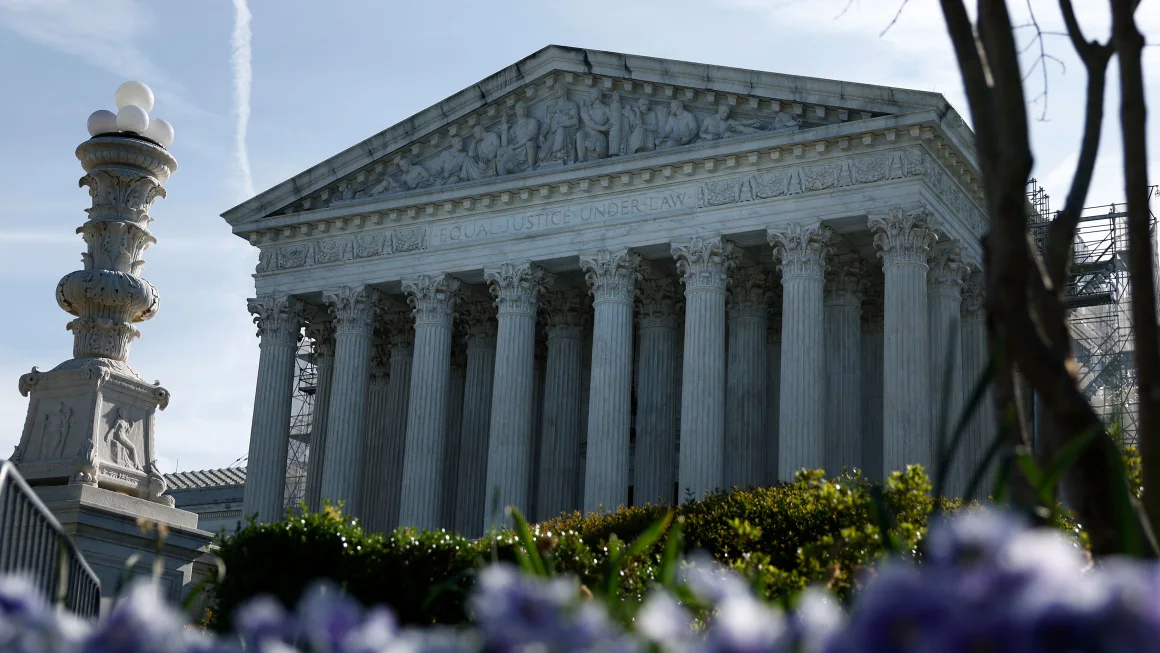The most recent ruling by the highest court to limit the authority of the federal government to safeguard the environment was Thursday’s overturn of a Biden administration initiative to decrease transboundary smog and air pollution.
The judgment is a victory for the states and business groups led by Republicans who opposed the EPA’s “good neighbor” plan. This plan aimed to minimize pollution for areas downstream by imposing severe emission restrictions on power stations and other industrial sources in upwind states.
The Supreme Court’s Thursday stay decision does not kill the plan outright, but it does delay its implementation while a complex legal battle unfolds, which could drag on well beyond the November election, into next year, and even into the presidency of another candidate.
The opinion was written by Justice Neil Gorsuch on behalf of a 5-4 majority. In a dissenting opinion, Justice Amy Coney Barrett and the three liberal justices argued that the court was moving too fast to intervene before reviewing the entire record of the case in lower courts.
Without complete briefing and reasoned lower court rulings, the merits of the applications must be swiftly evaluated due to the urgency of our emergency docket, Barrett said. “With those constraints in mind, it is imperative that we exercise extreme caution when faced with comprehensive, technically demanding records and complex legal issues such as this one.”
It is noteworthy that Barrett disagrees with the conservative wing as a whole. While arguing the case’s merits, she and the three liberal justices had raised doubts about whether the Supreme Court should approve the motion to block the plan, citing the limited review of the underlying legal dispute by lower courts.
The Supreme Court’s judgment is the most recent devastating blow to environmental regulators and President Joe Biden’s environmental and climate program. The capacity of the EPA to regulate carbon emissions from power plants was curbed in 2022 by the conservative majority of the court. Wetlands were one area where its regulatory power was reduced last year.
In the event that the court agreed with Ohio, Indiana, and West Virginia, the states that initiated the emergency appeal, Biden authorities and neighboring states including New York, Connecticut, and Delaware expressed concerns about “dangerous ozone spikes” impacting the well-being of locals, especially children and the elderly.
“Which will postpone the benefits that the Good Neighbor Plan is already achieving in many states and communities,” the EPA’s statement said, adding that the agency was “disappointed” with Thursday’s decision. The EPA representative emphasized that the stay would only be in effect while the matter is being reviewed in lower courts and that it did not constitute a final determination about the validity of the smog rule.
“The agency is confident that the Good Neighbor Plan is well-grounded in its Clean Air Act authority and is excited to defend the merits of this important public health protection before the D.C. Circuit Court of Appeals,” stated the EPA spokeswoman.
The Biden administration will “continue to take ambitious action that protects our communities, especially those who have disproportionately shoulderered the burden of pollution,” according to White House spokeswoman Angelo Fernandez-Hernandez.
The Environmental Protection Agency is obligated by the Clean Air Act to periodically assess the conformity of interstate pollution regulations with current health recommendations. States were given three years from the date of the Obama administration’s 2015 standard updates to submit plans outlining how they would achieve the new objectives. After the rule sat dormant under Trump’s government, Biden’s EPA finally updated it in March to meet a court-ordered deadline.
Those who were against the plan said it may “destabilize the states’ power grids.” Nevertheless, the Biden administration argued that such forecasts were grounded upon “speculative allegations” regarding the potential need to shut down certain power facilities “at some future point.”
“The country’s power grid is already stressed as it is, and now this administration is attempting to add more regulation that’s going to stress the grid even more,” said Republican West Virginia Attorney General Patrick Morrisey, who characterized Thursday’s Supreme Court decision as “correct.”
Many of the plan’s provisions wouldn’t go into force until 2026, according to the Biden administration, which questioned the urgency of the court’s decision that the industry and GOP-led states had requested. In addition, they brought up the fact that the agency’s actions to safeguard downwind states’ air quality are mandated under the Clean Air Act, which was first passed by Congress in the 1960s.
This is the first of two decisions that the Supreme Court is expected to deliver this term that could significantly impact the way the EPA regulates clean water and air, and it comes during a crucial election year when a large number of young voters are demanding that the president take action on climate change. Loper Bright Enterprises v. Raimondo, the second case, has the potential to reverse the Chevron deference, a 1984 ruling that established a legal standard that allows federal agencies broad discretion to propose regulations and often requires courts to defer to agencies.
It is generally believed that Gorsuch is spearheading the movement to overrule Chevron. His mother, Anne Gorsuch, was an EPA administrator appointed by Reagan who presided over a time of regulation that was harmful to the environment. He is the son of this administrator.









